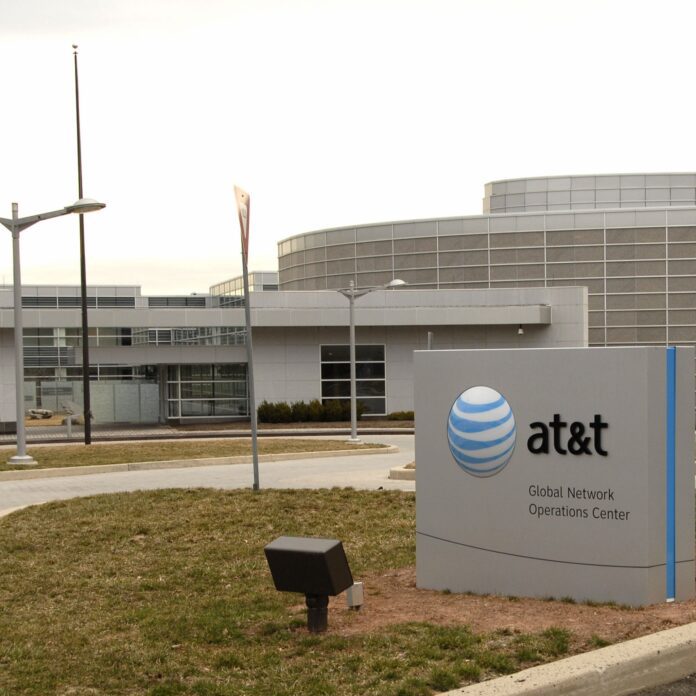AT&T and T-Mobile US continued their position battle ahead of the Federal Communications Commission’s planned release of rules for the highly anticipated 600 MHz incentive auction, which are expected to be announced next month.
In a blog post, AT&T VP of federal regulatory Joan Marsh laid out a number of “facts” the carrier claims are necessary or could impact the FCC’s auction plans. Marsh’s argument boils down to calls for the FCC to not limit bidding for the nation’s two largest operators if it wants to meet its revenue goal. According to AT&T, that goal could be north of $30 billion.
Marsh notes that for the auction to be successful, the FCC will need to convince television broadcasters to cough up at least 84 megahertz of spectrum, which would provide for 70 megahertz that can then be auctioned to wireless operators. Using the 700 MHz spectrum auction for reference, which garnered nearly $20 billion in bids for 70 megahertz of spectrum, Marsh claims that factoring in relocation costs and any additional funding needed for FirstNet and next-generation 911 services could push the total cost required to run the auction to that $30 billion mark.
Using that revenue mark, Marsh argues that it will take considerable participation of larger operators to meet that funding requirement and that setting aside spectrum or limiting bidding on any license will impact the fund-raising capabilities of the auction.
“The Commission should instead be focused on ensuring that the wireless industry as a whole can raise the $30 billion in auction capital that may be needed to close an 84 [megahertz] auction, especially given capital commitments that will be made for the AWS-3 auction,” Marsh said. “And notably, as we learned with the H-Block auction, there is no guarantee that all major operators will even show up.”
The FCC earlier this week released partial rules for the AWS-3 auction, which will include a total of 65 megahertz of spectrum across the 1.7/2.1 GHz band, including 50 megahertz set aside for commercial wireless operators. The spectrum licenses up for bid will include three 5×5 megahertz options, leaving just a single 10×10 megahertz license covering the country. While the FCC release did not specify the size of geographic size of those licenses, comments indicated that the 5×5 megahertz licenses would include two sized to economic area dimensions and one sized to commercial market area dimensions. Smaller operators have been pushing for the FCC to carve out sufficient spectrum in smaller geographic areas in an attempt to cater to their more specific coverage needs that generally do not include major markets, while larger carriers tend to prefer larger license blocks in the EA (176 total licenses) or larger blocks that they claim are easier to manage in an auction format.
The recently completed H-Block auction raised just over $1.5 billion, with Dish Network running away with all 176 EA-sized spectrum licenses that include 10 megahertz in the upper 1.9 GHz hand.
T-Mobile US quickly took AT&T’s claims to task, with Kathleen Ham, VP of federal regulatory affairs at the carrier releasing a statement claiming only an auction that promotes the greatest number of bidders will meet revenue requirements.
“AT&T has demonstrated admirable consistency in its public comments on the incentive auction – that somehow sacrificing competition for duopoly is good public policy,” Ham said. “Only an auction with robust competition from multiple bidders of all size will meet revenue objectives and result in a competitive, innovative mobile broadband landscape for the future that benefits consumers.”
T-Mobile US, which has been very active in its opposition to open bidding for the spectrum, has put forth its “dynamic market rules” proposal that would place a spectrum aggregation limit on the amount of spectrum that can be won by a single operator. As the carrier explained:
“Under the dynamic market rule, the auction would first proceed with a spectrum-aggregation limit. If the commission’s revenue target is met while the limit is in place, then the auction would be able to close once there is no longer any active bidding. If the revenue target is not met, however, the limit would be gradually relaxed. Should the bidding fail to clear the revenue target once the limit is completely removed, the commission would resume the process by starting at the next lower spectrum target with the aggregation limit in place.”
Wireless carriers and broadcaster representatives discussed the upcoming 600 MHz incentive auction at the recent Competitive Carriers Association event.
T-Mobile US, along with a number of smaller operators and trade organizations, have also argued for spectrum aggregation limits focused limiting participation of Verizon Wireless and AT&T in acquiring more sub-1 GHz spectrum, noting those two operators currently control more than 80% of that spectrum.
T-Mobile US and AT&T also bickered through their respective policy blogs ahead of the AWS-3 auction rules release.
Bored? Why not follow me on Twitter

